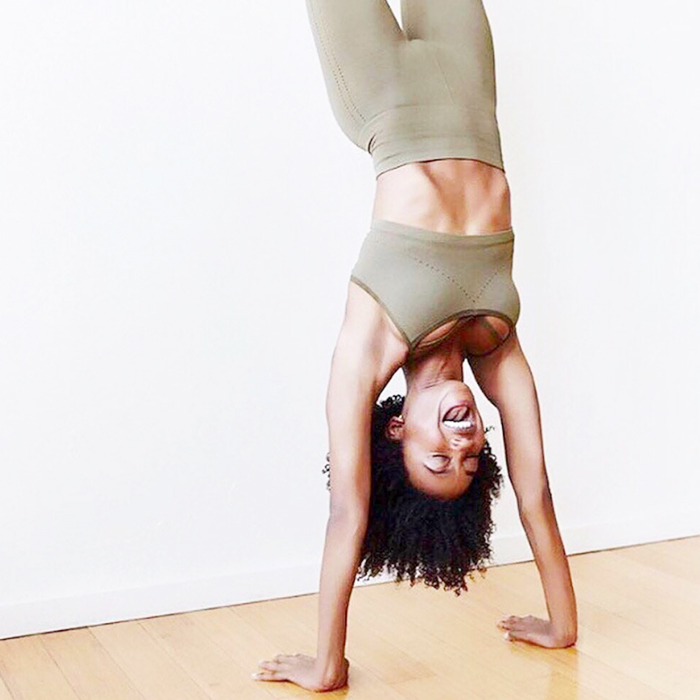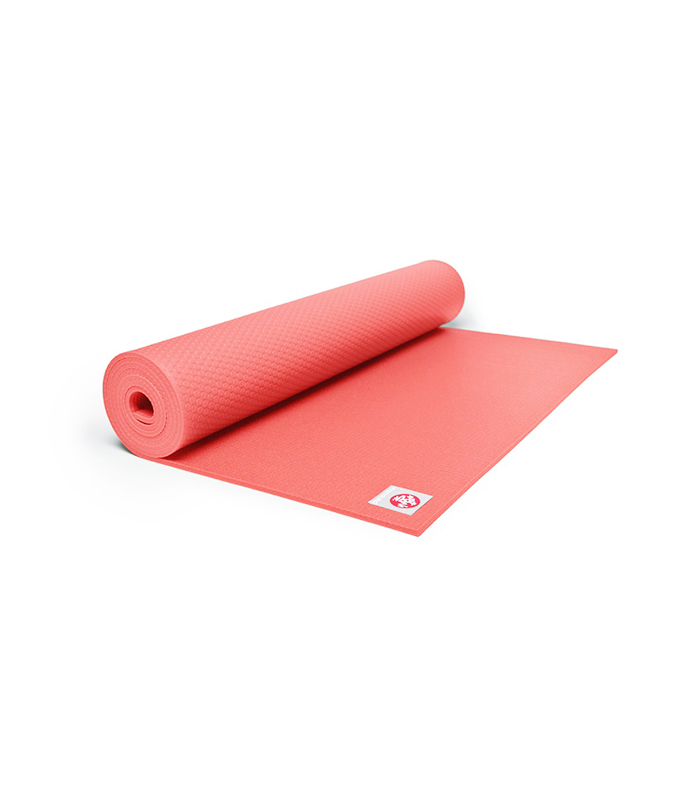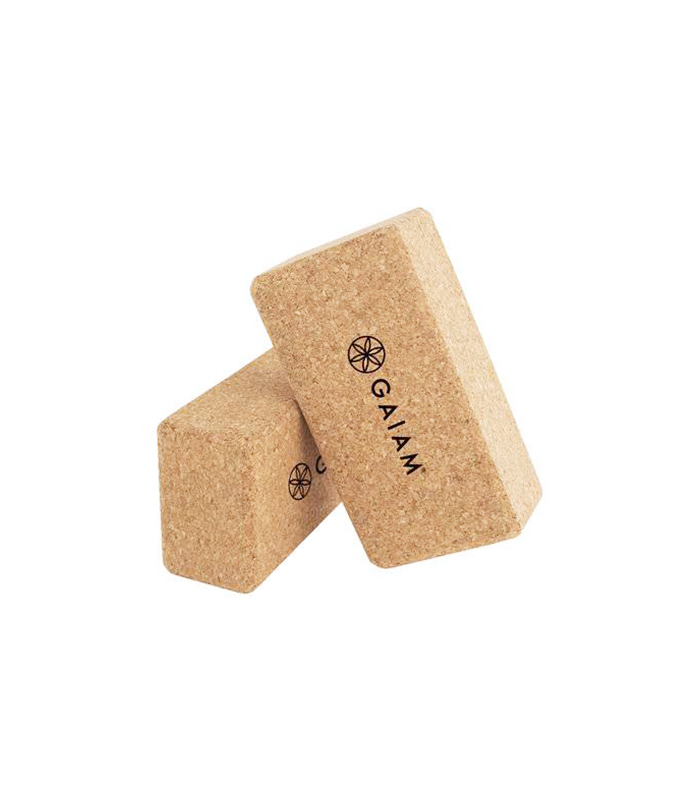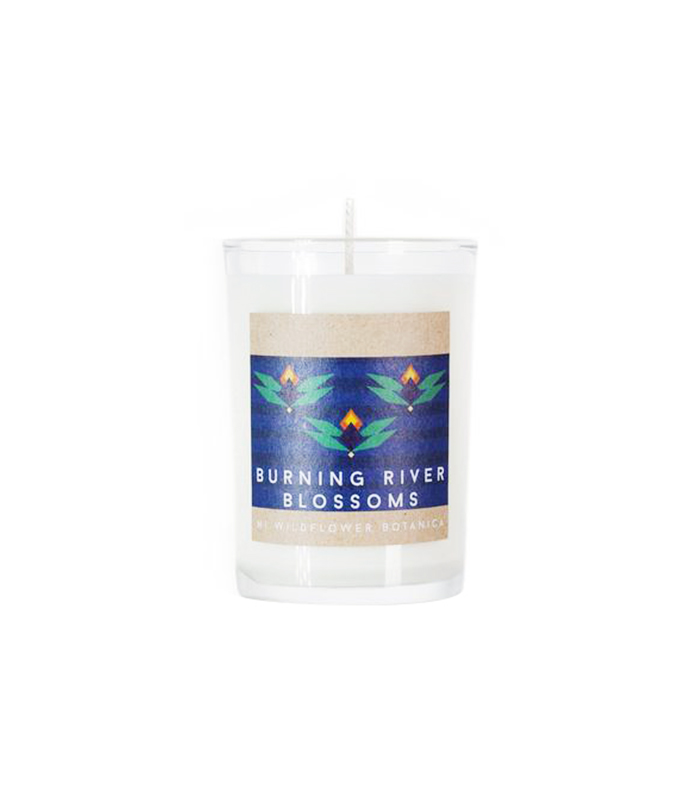How to Start Doing Yoga at Home (When You Have No Clue Where to Begin)

Danielle Acoff is a professional dancer, model, actress, and yoga instructor with a passion for holistic health. She has worked in entertainment for 12 years and uses yoga, meditation, and her love of all things movement to keep her balanced in a high-pressure industry. Keep an eye out for her articles about everything from self-care to breathing techniques. Below, she explains how to develop a home practice—and why it's beneficial and incredibly freeing to do so.
One of the main questions I get asked is How do I start doing yoga on my own? For me personally, my home practice is where creativity thrives. Of course, being in a studio with an amazing teacher for adjustments and alignment help is invaluable—but having a place in your home to let go and breathe is very sacred.
With that in mind, I'd love to share a few things that have made a difference in making time for myself on the mat over the years. That's not to say I'm always consistent—it's a major commitment to show up every single day. It's so important not to beat yourself up for missing a day (or several). Just make sure you make it back and begin again.
Keep reading to learn how to set yourself up for a great at-home practice.
1. Set up a dedicated space for your mat
I have designated a corner of my home with a corner mirror, a basket of mats, a foam roller, and blocks. I also have candles on a table with a plant. Basically, this corner lives as an instant yoga studio for me when I roll out my mat. Holding a space within your home that gives off good, inviting energy will make you yearn to be sitting in that very corner on your mat.
2. Pick some tunes
I find that sitting in silence for a few minutes or more (depending on the amount of time allotted for practice) and then turning on music really inspires me to move. Music has the ability to help drop you deeper into the moment, and your breath becomes part of the music. Choose songs that speak to you and are slow and relaxing. The Dreamy Vibes playlist on Spotify is one of my absolute favorites.
3. Begin with Sun Salutations
I like to begin each practice with five rounds of Surya Namaskar A, also known as Sun Salutation A: It builds internal heat, and sometimes this sequence alone is enough if I have busy day. Starting your practice like this is an excellent way to warm up and feel out your body. Feel the tightness, the cracks, and go as slow as you like—after all, this is your practice. Monitoring where you feel tightness can help guide how you will practice that day. If you aren’t familiar with the Sun Salutations, you can always use YouTube and follow along. After a while, it will be second nature to you!
4. Just move and breathe
I think it’s important to let go of the expectations of what your practice is supposed to look like. If you know a few poses, you can start with those. Remember a pose you loved in class? You can incorporate that into your time on the mat. Some days, a restorative practice will be needed, while others you may feel you want to do a more physical practice. If anything hurts, pull back and acknowledge the fact that you need to do less that day.
When you draw a blank on the next pose you want to do, come back to Downward Dog and breathe. Then, begin to move into any posture that feels good to you at the moment. Keep your breath in sync with your movement and make sure to keep symmetry in mind—mirror both sides of your practice for the left and right sides of the body.
5. Lie down in stillness
Savasana (your final rest) is the best part of the practice, so try not to miss this crucial step at home. You (hopefully) wouldn't walk out of yoga before Savasana, so don't cheat yourself out of the reason you did all the work in the first place! It can last for three minutes to three hours—it doesn't matter, as long as you give yourself the time for your breath to come back to steady, and the pose settles into your being.
Next up, see what your yoga instructor is really thinking during class.
This article is provided for informational purposes only and is not intended to be used in the place of advice of your physician or other medical professionals. You should always consult with your doctor or healthcare provider first with any health-related questions.


